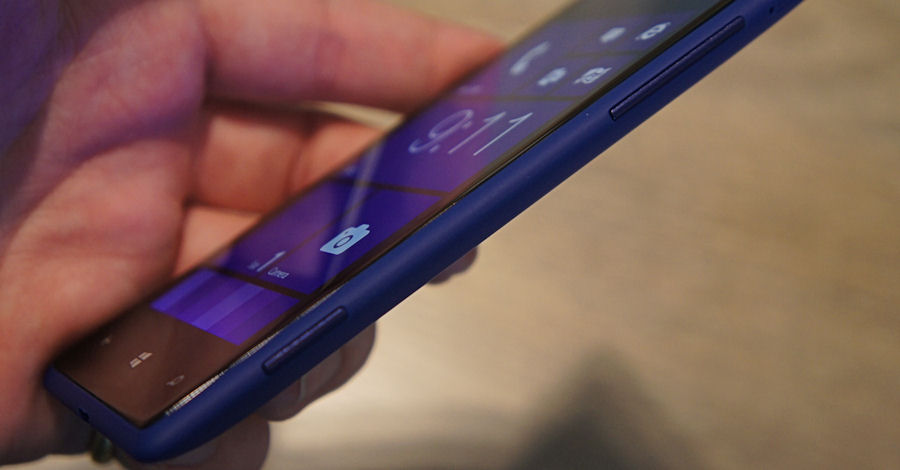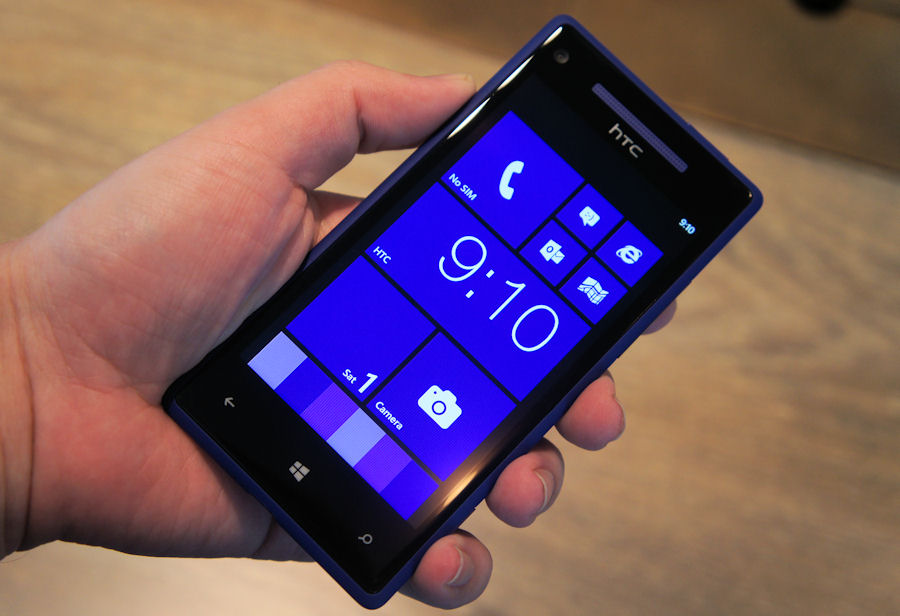
Design
It only takes a single glance at the 8X to see that HTC has stepped up to very highest level of design with its new Windows Phone 8 flagship. With clean lines, a sleek profile, elegantly tapered edges, and bold colours, the 8X is a visually stunning design. In design terms, HTC decided to start from a blank piece of paper. While there are obviously design cues from other HTC devices, most notably the Android-powered One series, the company deliberately decided to give its Windows Phone 8 devices a distinctive character, recognising that a single design cannot serve all platforms.
The inspiration for the 8X's overall design shape was the idea of a live tile drawn out of the Windows Phone Start screen and then inflated like a cushion, giving the distinctive tapered edges. From a technical point of view this is a challenging design to implement because it is necessary to place the thicker components towards the centre of the device, thus adding an additional design constraint.
The overall shape and tapered edges of the device are the clear standout feature of the design, but also significant is the extent to which HTC has taken a minimalist approach with other design elements. The attention to detail in the subtle gloss finish on the buttons and the recessed microUSB port, are good examples of this.
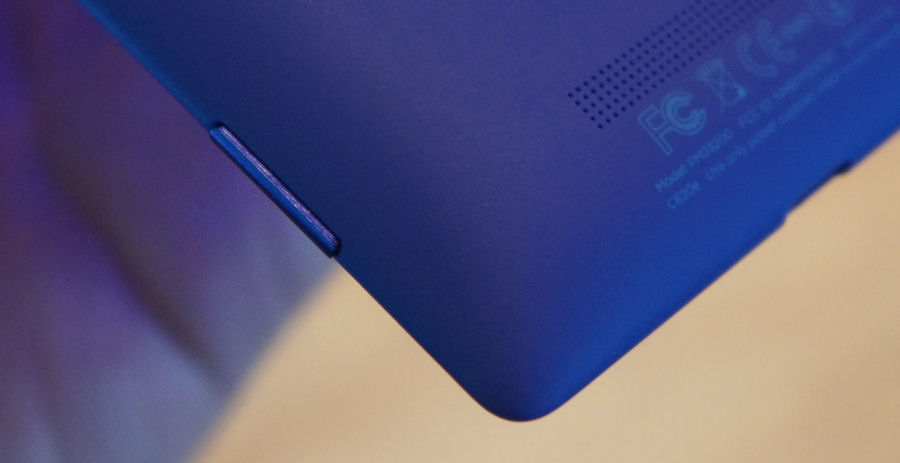
In the hand, the 8X feels surprisingly light (130g), especially compared to the Nokia Lumia 920, but still manages to retain a pleasing feel of solidity. The device's tapered edges make it feel even thinner than it actually is (132.35 x 66.2 x 10.12 mm). It's almost as if the device is floating in your hands.
Build quality appears excellent, with no apparent squeaks or rattles. The screen, which sits slightly above the surrounding casing, does feel a little exposed and, thanks to the slim profile, there's a greater overall sense of innate delicacy than earlier HTC phones. However, ultimately only time will tell how well the 8X stands up to day to day usage.
In terms of materials, the 8X combines a polycarbonate unibody casing with HTC's distinctive soft touch finish, which encircles a gorilla glass protected screen. It's an effective combination that's a great improvement over the multi-piece designs HTC has used for its previous Windows Phone devices. Some may lament the absence of a metallic finish, but when you consider the RF performance benefits of a plastic design, and add that to the warmer feel in the hand, there's really no contest.
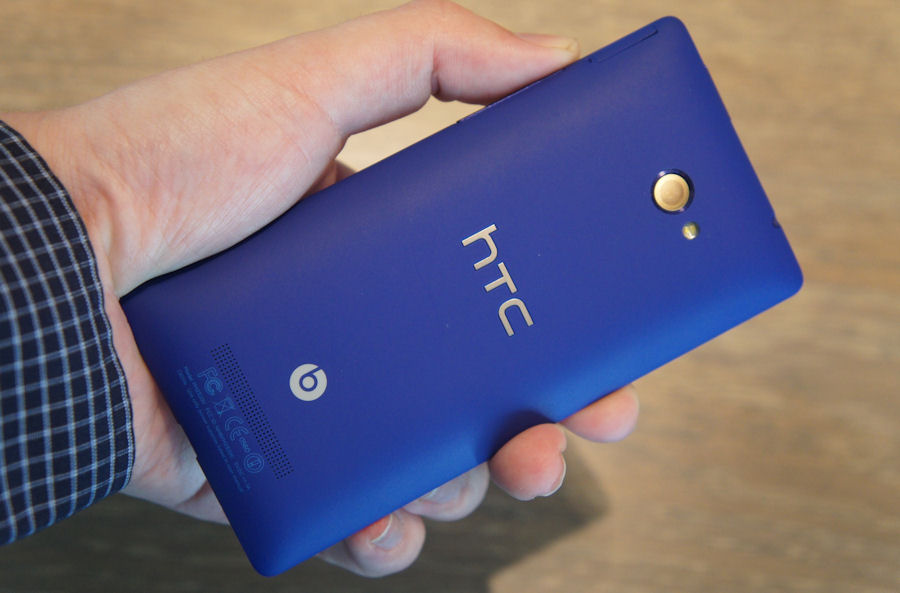
Thanks to the inherent properties of the polycarbonate casing, the 8X will be available in a range of colours: California Blue, Graphite Black, Limelight Yellow and Flame Red. The blue variant is likely to be the mainstay of the European market, but the exact colour availability will be dependent on operators. The yellow variant is particularly striking, and we can't see anyone losing it, but it's probably going to be a little too much for most people. HTC has experimented with colours before, but the 8X is the boldest statement yet that consumers are looking for something more that the standard black and white.
The 8X's HD resolution screen (720x1280), which measures 4.3 inch across the diagonal (pixel density of 341 ppi), is a Super LCD 2 unit and boasts the same screen lamination technology that HTC pioneered in the HTC One X. This reduces the distance between the screen and the protective Gorilla glass, which means pixels almost seem to skim across the surface of the phone, and also improves outdoors visibility.
Audio and camera
It is becoming harder for manufacturers to stand out from the crowd. Good design has become a requirement, something that's needed before anything else can be considered, plus more and more attention has been placed on building good user experiences. HTC is no exception to this, making a number of investments around audio and imaging technology, so it's no surprise to see these elements getting a high profile in the 8X.
The 8X is HTC's first Windows Phone device to incorporate Beats audio technology, as heralded by the Beats logo on the back of the device. The Beats technology aims to improve music output by optimising sound based on the characteristics of the music itself, the phone's DSP and amplifiers, and the headphones plugged into the device. HTC describe this as being about "sound profiles", which effectively means equalizer settings (i.e. some sound frequencies will get boosted and some reduced). Audio purists will likely be somewhat horrified by the prospect, but our experience suggest that Beats audio does seem to make a discernible difference.
However, Beats technology is only one element of the audio tuning in the 8X. HTC has upped the voltage of the base audio output to 1.55V (a more usual level is 0.5V). For the 3.5mm audio out port there's a secondary dedicated amplifier that further increases the output to 2.55V. This not only improves sound quality (and, to some extent, available volume), but also makes it possible to power standalone speakers. HTC feel this is important because the "quality of the 8X's audio output is such that people will want to listen on more than just headphones". There's also a secondary amplifier on the loudspeaker circuitry, which significantly improves the audio quality output and means audio is crisper and deeper than it otherwise would be.
The 8X has the same camera technology as the HTC One X and S, combining an 8 megapixel camera module with HTC's custom ImageChip to give some excellent results. It's not going to match Nokia's best cameraphones (N8, 808 PureView, Lumia 920), but it does edge out the iPhone 4S and Samsung Galaxy S3 to claim the top spot in the 'best of the rest' category. The camera has a f2.0 lens (letting in 40% more light than a f2.6), giving good low light results, which is backed up a back-side-illuminated (BSI) sensor.
Both the back and front facing cameras can be used to record video, with support for resolutions up to 1080p, with stereo sound from the device's twin microphones (bottom and top of the device).
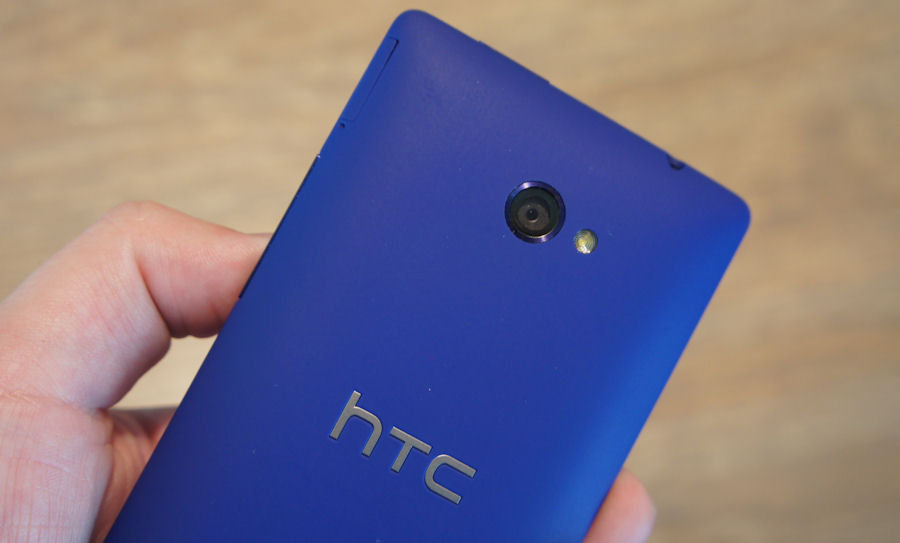
Perhaps more intriguingly, HTC has also done a lot of work on the front facing camera in response to the increasing number of self-shot images appearing on social network and photo sharing sites (i.e. those taken by holding a cameraphone at arms length, while using the screen as a view finder). The front facing camera has a 2.1 megapixel BSI sensor, with wide angle f2.0 lens. The wide angle (88 degrees) means it's possible to fit more into a shot, so that rather than the the typical 'two people' arm length shot, it should be possible to squeeze in four people into a single shot.
Other hardware
Internally, the 8X has a dual core 1.5GHz Snapdragon S4 processor, with 1 GB of RAM. There's 16GB of internal memory, but no microSD card slot. That may be an issue for some, but with built-in SkyDrive support and increasing use of cloud services, it is less of an issue than it might have been a few years ago.
Connectivity options include Bluetooth 3.1, WiFi and NFC. The exact cellular radios will vary by market, but the 8X will launch as a dual band UTMS (3G - 850/900 and 1900/2100) device in Europe. HTC say the absence of LTE means they'll be able to launch the device more quickly, in a larger number of markets, something which they view as important in getting out the gate quickly with Windows Phone 8.
The 8X has an integral 1800 mAh battery, which should get through a day of reasonable usage without too many problems. We'll have to wait for more information on Windows Phone 8 and a review device before giving a more definitive statement. Onboard sensors include proximity, ambient light, digital compass and g-sensor.
Windows Phone 8
In common with the other Windows Phone 8 launches to date, HTC were unable to show anything beyond the new style Start screen that was shown off by Microsoft earlier this summer.
Microsoft is planning a full reveal for the software side of Windows Phone 8 before the devices go on sale, but it's a little frustrating to only have half the story. On the other hand, it does focus much deserved attention on hardware and design, and ensures the maximum amount of publicity for what is a critical launch for both Microsoft and its hardware partners.
HTC say that they will continue to offer unique 'HTC' apps, but are unable to provide any additional details at this time.
Availability and pricing
The Windows Phone 8X by HTC will hit shop shelves, together with its sister device the HTC 8S, in early November. HTC say it will be available in 52 countries, on over 126 operators, making it the broadest launch to date for a Windows Phone device. Key partners include AT&T, T-Mobile and Verizon Wireless in the USA; Vodafone, Orange and T-Mobile in Europe; and Telstra, Vodafone Australia, Singapore Telecommunications Group, Chunghwa Telecom, Smartone, Optus and Telecom NZ in Asia-Pacific.
Official pricing has yet to be confirmed and is subject to the usual operator contract subsidies and taxes, but we understand that UK consumers can expect the 8X to be available for free on a £36 a month 2 year contract. In the UK, the 8X will be ranged by Vodafone, Orange, T-Mobile, O2, Three, and Virgin Media. It will also be available from Phone 4u and Carphone Warehouse.
Conclusion
The 8X takes over from the Titan and Titan 2 as the flagship Windows Phone device from HTC. It is, perhaps, not quite the specification monster that some of HTC's fan were waiting for. For example, the 8X has a notably smaller screen (4.3 inches versus 4.7 inches) than the Titan, but this should make the device accessible to a greater number of people, and, in every other way, offers a superior specification. More critically, the design, together with the key audio and camera user experiences, should make the 8X stand out from the crowd. It looks set to join the Apple iPhone 5, Nokia Lumia 920, Samsung Galaxy S3 and HTC One X as the the standout smartphones for the Christmas shopping season.

